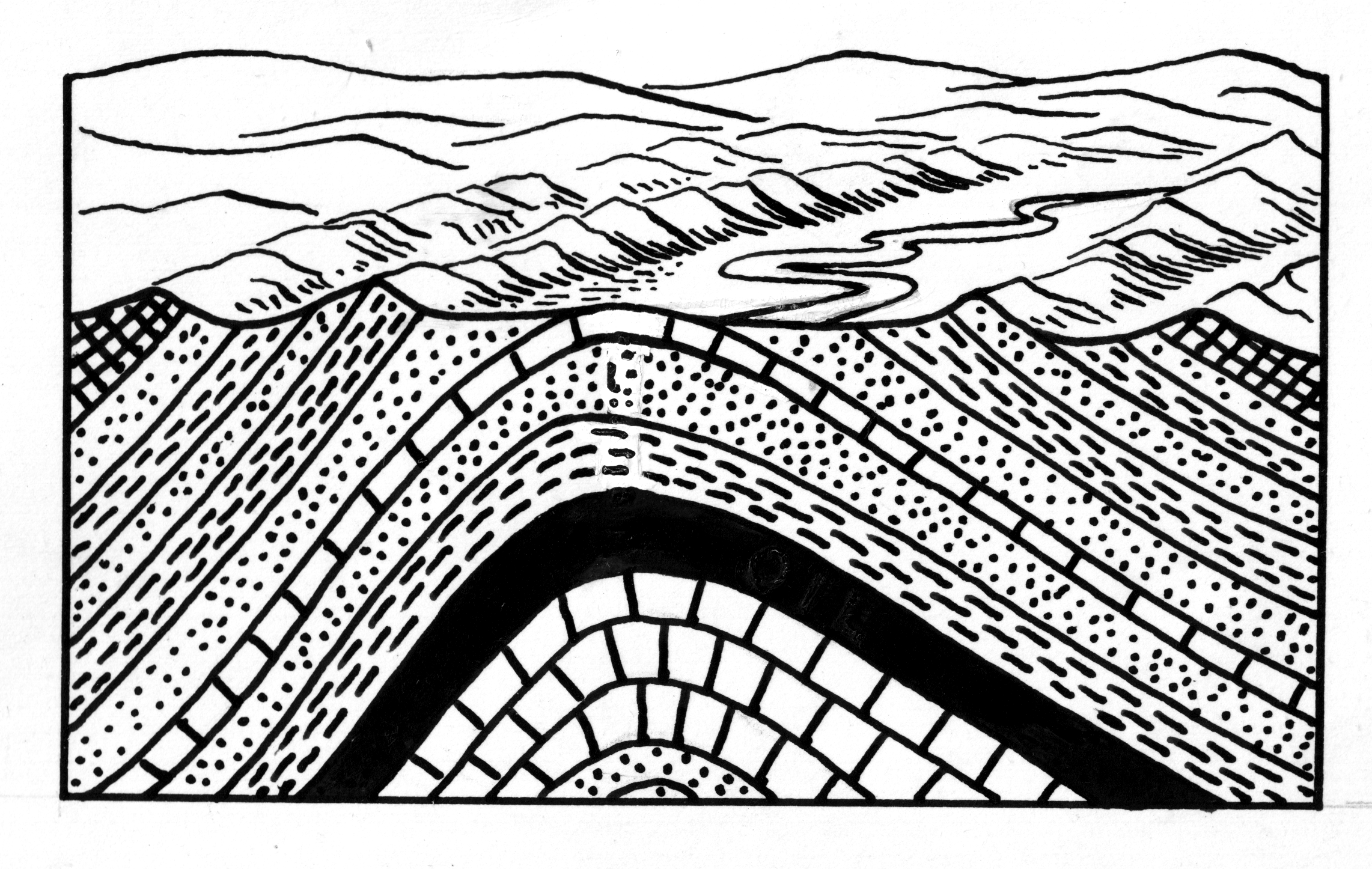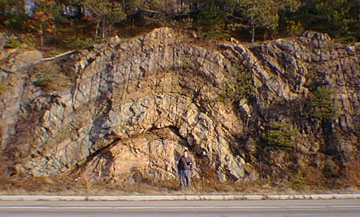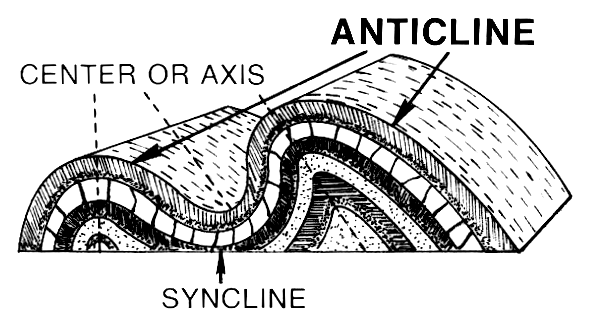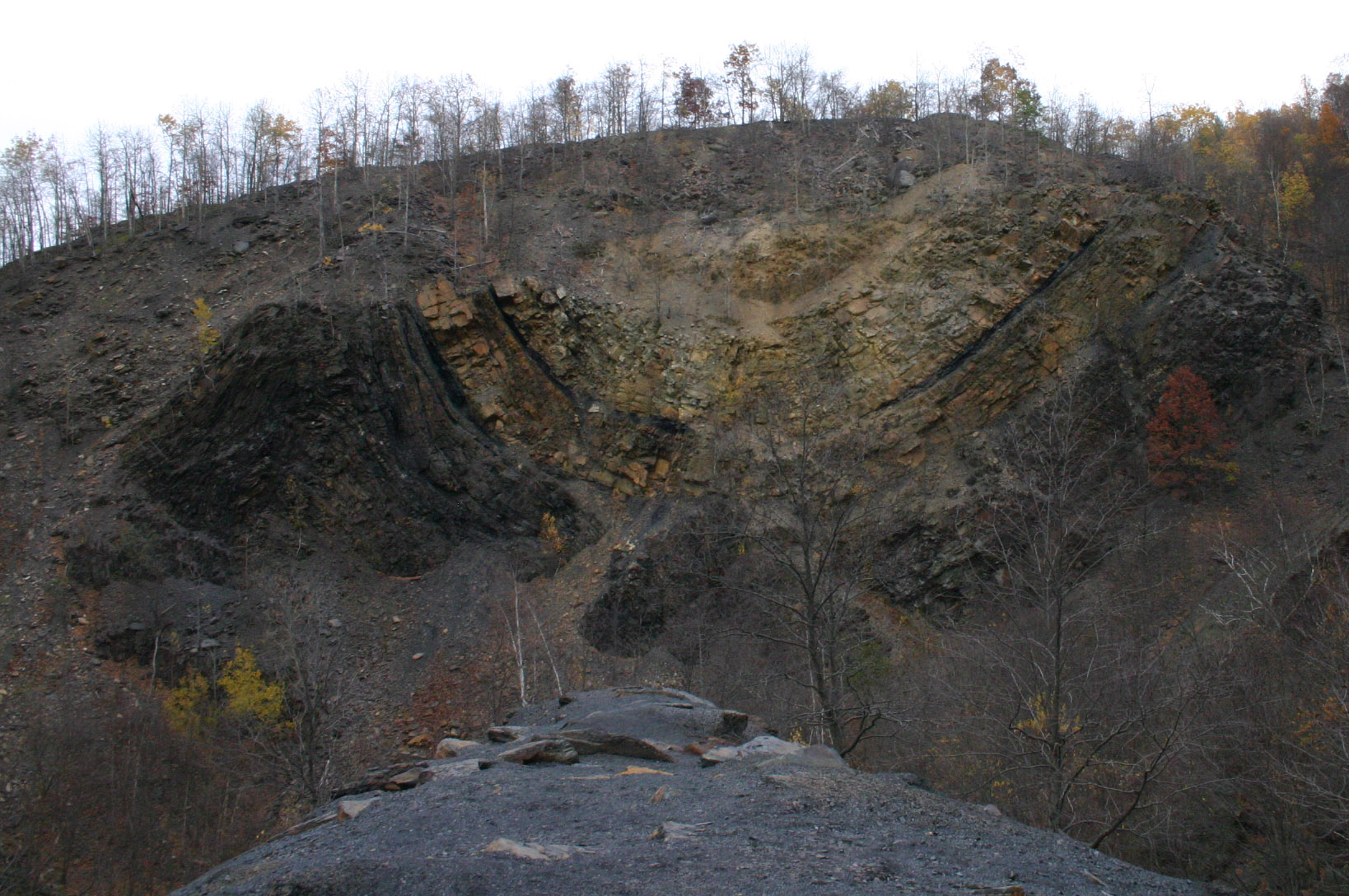EXPLORATION: Layers and Plate Tectonics
Completion requirements
4. Folding
The earth's crust is constantly being changed due to tectonic forces. Compression, tension and sheer from plate movement can cause various kinds of deformation. Thick layers of rock can be bent, twisted and uplifted.
 |
 |
| Rock strata (layers) bent up into an anticline | An example of an anticline. |
If rock layers are bent down, this is called a syncline (think of "sinking" layers to help remember this.
 |
 |
| A diagram of a syncline (middle part of diagram) | An example of a syncline. |
As the picture above shows, anticlines and synclines often occur together. Try this: take a single piece of paper and push in from both ends; it should produce an anticline and a syncline. These structures are created deep inside the earth, but we as humans only notice them when they are exposed by weathering and erosion or human activities such as rock blasting.